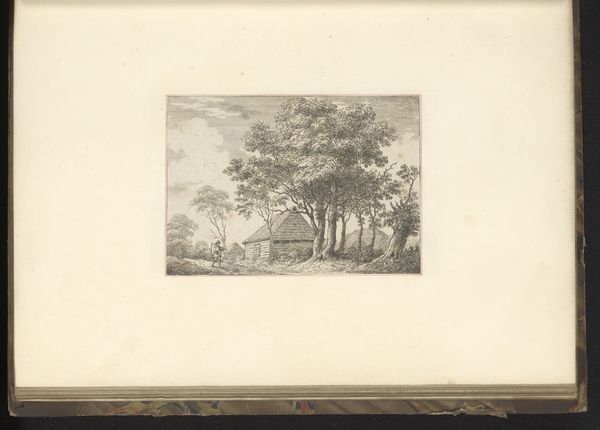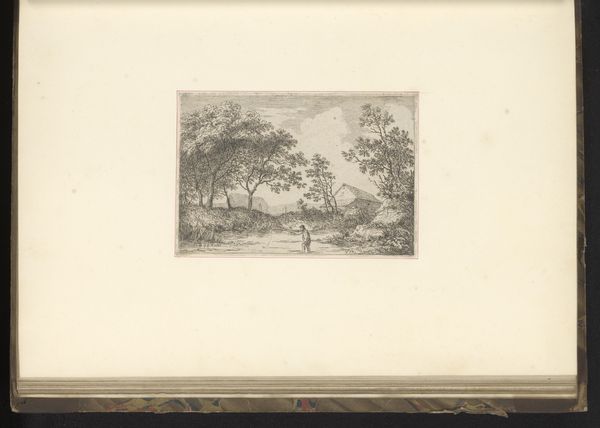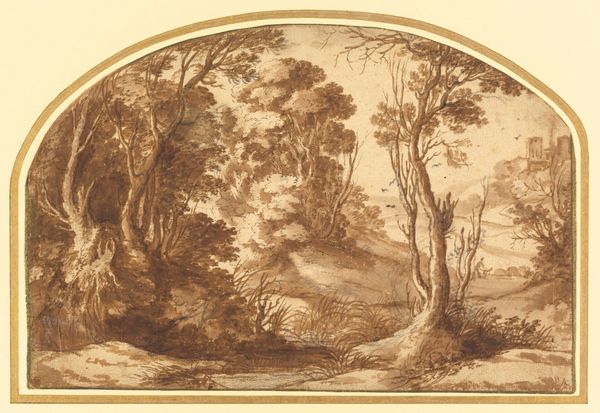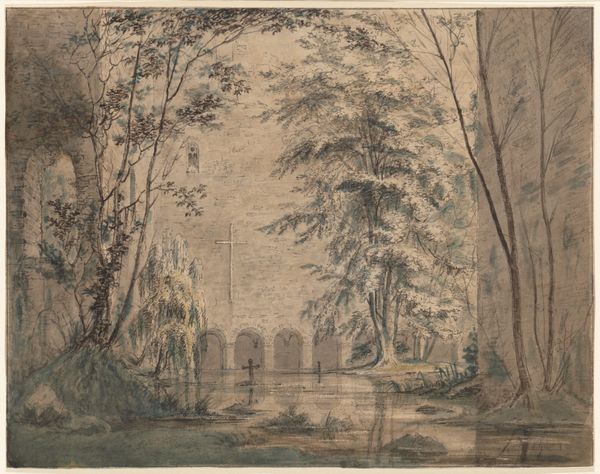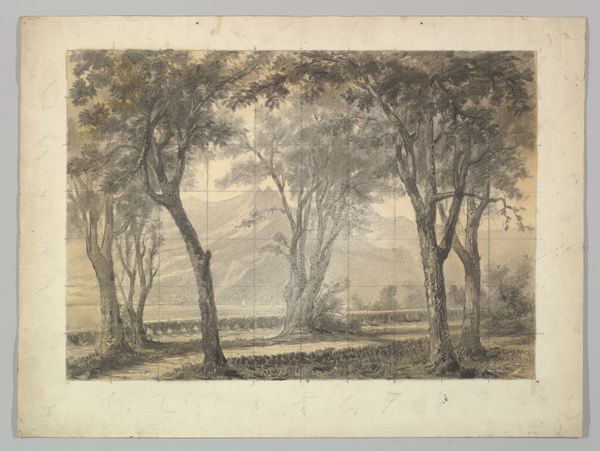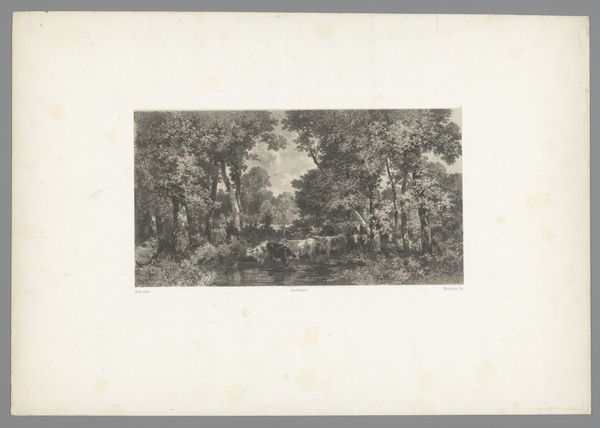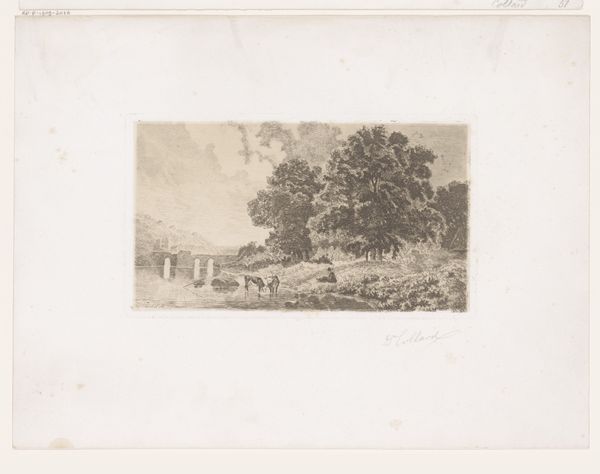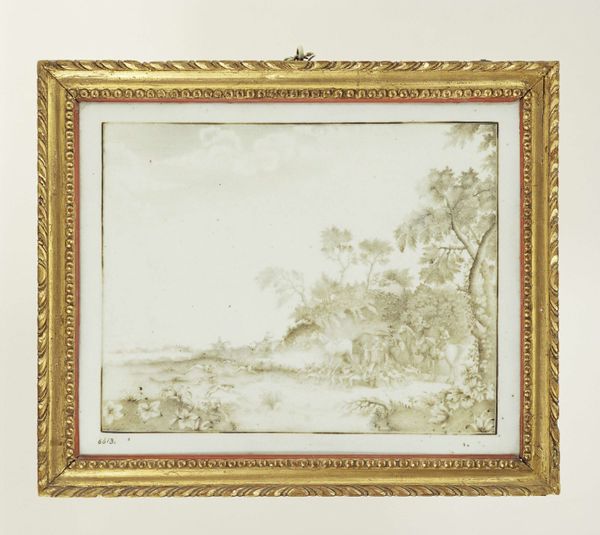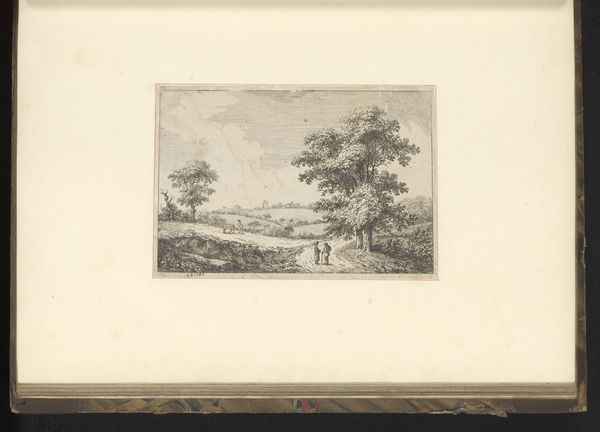
painting
#
water colours
#
painting
#
landscape
#
watercolor
Dimensions: overall: 45.8 x 62.4 cm (18 1/16 x 24 9/16 in.)
Copyright: National Gallery of Art: CC0 1.0
Curator: This watercolor, dating from the period 1854 to 1869, is entitled “A Caribbe Village in Dutch Guiana” and comes to us from the hand of George Catlin. Editor: Immediately, the tight, almost claustrophobic composition strikes me, the way the artist contains the vibrant jungle scene within this oval format, layering lush greens upon soft browns. Curator: Catlin, who famously documented Native American life, here turns his attention to a very different context, visualizing a community and landscape shaped by colonization and cultural exchange in what is now Suriname. It invites consideration of how artists portray indigenous life through the lenses of their own cultures and historical moment. Editor: And consider how that frame focuses our gaze—pushing us into a romantic ideal. Notice the subtle gradations of light filtering through the trees. The structures provide a stable grid against the organic foliage. Do you see how that pond reflects the overhanging palms? This reinforces the artist’s ability to create depth within the picture. Curator: Indeed. The artist’s treatment might romanticize the scene, yet it contributes to larger dialogues about representation. It speaks volumes about Western perceptions and interactions with the people and cultures of South America. Think about the intent, the audience... what power dynamics are in play? Editor: Perhaps the muted palette contributes to this nostalgic gaze. A brighter treatment might have lessened this effect and the tension this painting evokes—this dance between idyllic portrayal and critical engagement. Curator: Thinking of its place within art history reminds me of landscape traditions from both Europe and the Americas—ideas of paradise or an untouched Eden. That’s clearly being subverted, though, because villages denote habitation, cultivation, and therefore influence upon the landscape. Editor: I think your take is completely plausible; for me the power resides in the layering—how this single perspective holds within it all these potential formal arrangements which then leads me back into cultural assessment just like you described. It seems simple at first, but it grows more interesting upon close inspection.
Comments
No comments
Be the first to comment and join the conversation on the ultimate creative platform.
